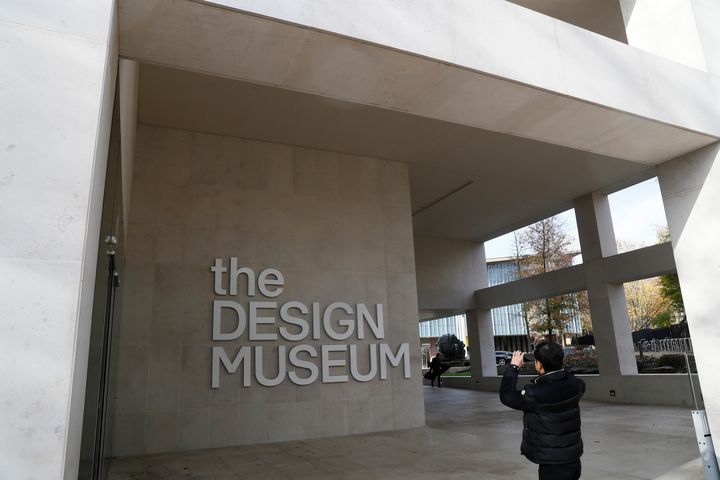
“Design is always political.”
These words by designer Mike Monteiro are emblazoned on the walls of London’s Design Museum. They’re there as part of the ongoing Hope to Nope exhibition, which focuses on how design has impacted politics over recent years.
The exhibition, which showcases subversive political materials from all over the world, is at the heart of a dispute between the museum’s management and the artists and designers with work on display.
The controversy began last week when it was revealed that the museum had hosted a reception event for Leonardo, the ninth biggest arms company in the world.
The event was held to coincide with the Farnborough Airshow, which is one of the biggest arms fairs in Europe. It brings thousands of arms company representatives together with civil servants and military delegates from around the world for a major festival of militarism.
Many of the companies in attendance at Farnborough, including Leonardo, fuel the injustices that much of the work in Hope to Nope is designed to highlight and critique. For example, the exhibition includes work representing the pro-democracy Hong Kong Umbrella Movement. In 2014 the movement was repressed with tear gas made by Chemring, one of the many companies at Farnborough.
The Museum’s decision shocked many throughout the artistic community. In an unprecedented move, more than 30 of the artists and designers with work on display in the exhibition wrote to the museum calling for their work to be withdrawn unless the Museum agrees to adopt an ethical funding policy by August 1.
“Museums are not neutral spaces” the letter says. “Every decision about what is displayed, how it is labelled and how it is funded is political, and reveals something about the underlying values of the institution. By hosting an arms industry event, the Design Museum is presenting values that are strongly at odds with most of the art in Hope to Nope, which aspires to use the power of design to challenge powerful elites and promote peace and justice.”
It’s obvious why Leonardo wanted to use the Design Museum for their reception. It’s a great museum with an excellent reputation. It’s exactly the kind of place that their guests can enjoy while they network and go about their business. But by hosting them, I believe the Design Museum is giving both moral and practical support to the work they do.
This kind of association works both ways, and reflects on both parties. This point is recognised by the Public and Commercial Sector Union, which represents 5,000 public gallery and museum workers across the UK. That is why its 2015 conference backed a motion to condemn arms company sponsorship of the cultural sector.
In 2015, Campaign Against Arms Trade wrote to the museum to inquire about its ethical policies and was assured “that we do take our responsibilities very seriously in this area and have a due diligence and sponsorship policy in place to this effect.” If, despite its policy, the museum doesn’t consider arms dealers beyond the pale then who, if anyone, would the existing policy actually block?
However, where there are arms companies trying to gain a veneer of respectability, there is also resistance. Only last month a high-profile campaign caused Glasgow City Council to commit to a new policy that would block it from sponsoring arms trade events in the future.
Likewise, in March, Europe’s biggest arms company, BAE Systems, was forced to withdraw as a ‘primary partner’ for the Great Exhibition of the North in 2018 after artists, musicians, and others spoke out against the sponsorship. These kinds of victories are essential in setting precedents and reclaiming public spaces from arms companies.
The reason for demanding change is not because campaigners and artists are unaware of the difficulties and financial pressures that are facing the sector. Rather it is because they recognise the crucially important role that museums play and want them to do so untainted and uncompromised.
Art, culture and design are central to our society, and are far too important to be used as promotional vehicles for companies like Leonardo. Unless there is a major change in the days ahead, then the artists will withdraw their work from the Design Museum, and in doing so make clear that the arms trade is not welcome.
Andrew Smith is a spokesperson for Campaign Against Arms Trade (CAAT).
